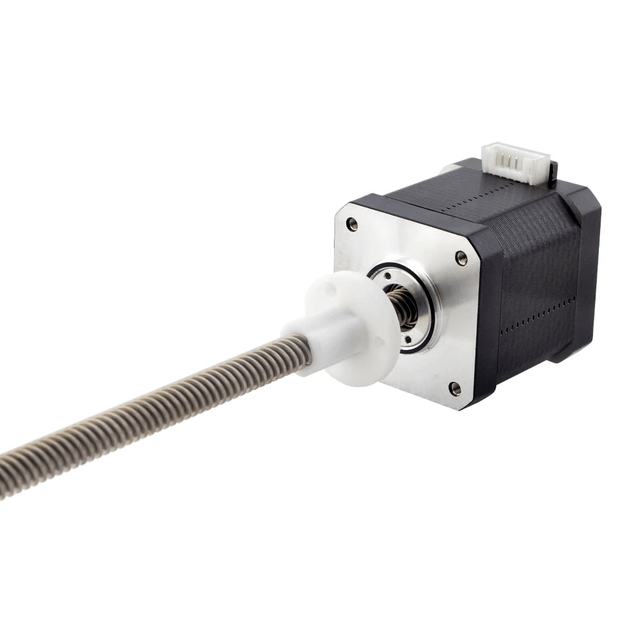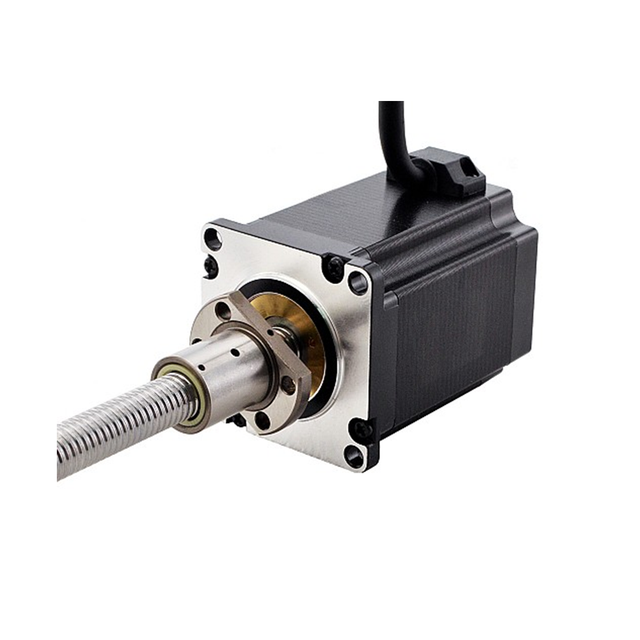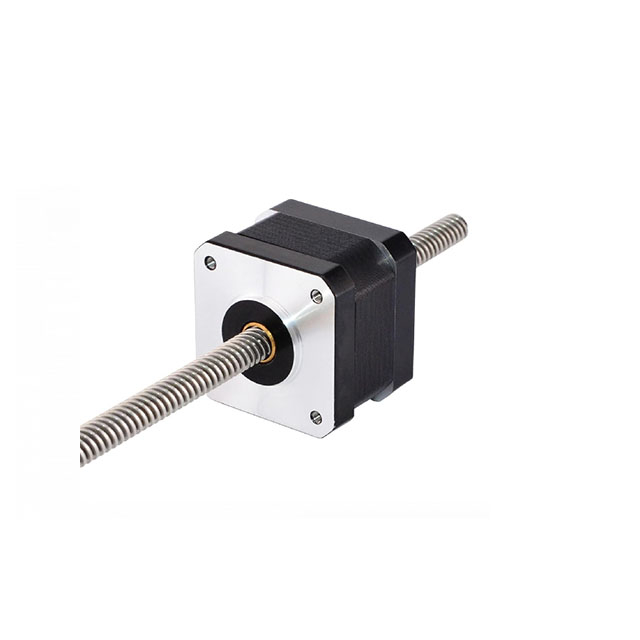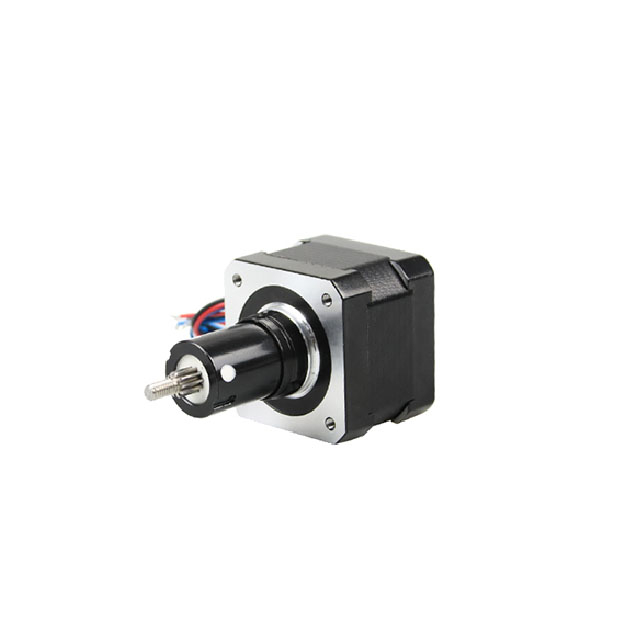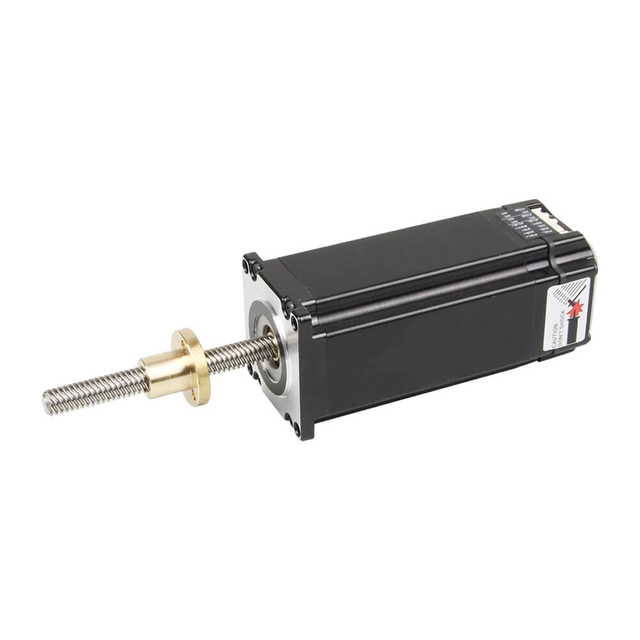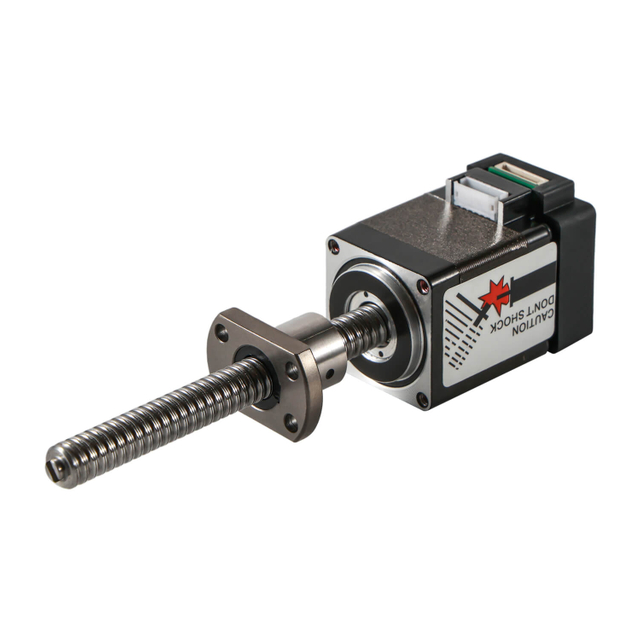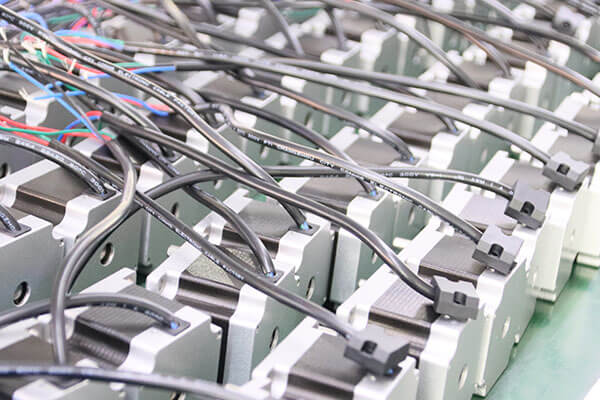
Choosing between a lead screw and a ball screw is one of the most important mechanical design decisions in any precision motion system. Whether developing automation equipment, CNC machinery, robotics, or high-load positioning platforms, selecting the optimal screw type directly influences accuracy, durability, efficiency, and long-term reliability. Below is a comprehensive, deeply detailed comparison to help determine which solution best aligns with performance and budget needs.
Understanding the Fundamentals of Lead Screws and Ball Screws
Lead screws and ball screw are two of the most widely used mechanisms for converting rotary motion into linear motion in mechanical systems. Although they perform the same fundamental function, their internal structures, operating principles, and performance characteristics differ significantly. Understanding these differences is essential for selecting the right screw type for a specific application.
What is lead screw ?
A lead screw—also known as a power screw or ACME screw—is a mechanical component designed with a threaded shaft and a matching nut. When the screw rotates, the nut moves linearly along the threads, generating precise linear motion.
Key Characteristics of Lead Screws
Operate using sliding friction between the screw and nut
Often feature trapezoidal or ACME thread geometry
Provide smooth and quiet motion
Typically self-locking (depending on the lead and friction)
Made in a wide range of materials, such as steel, stainless steel, brass, and polymer nuts
Because they rely on sliding contact, they inherently produce more friction, but this characteristic also enables strong load-holding capability.
What Is a Ball Screw?
A ball screw is a highly advanced motion-control device that uses a ball nut filled with recirculating ball bearings. As the screw rotates, the balls roll between the nut and screw threads, drastically reducing friction and improving efficiency.
Key Characteristics of Ball Screws
Utilize rolling friction through ball bearings
Extremely high mechanical efficiency (up to 98%)
Capable of very high positioning accuracy
Support high speeds and high duty cycles
Often designed with preloading to minimize backlash
Ball screws are engineered for precision. Their low friction reduces wear, resulting in long service life and consistent performance in demanding applications.
How They Work: Sliding vs. Rolling Mechanisms
Motion is achieved through direct sliding between the screw and nut.
More friction generates:
Heat
Reduced efficiency
Lower speed capability
However, the friction provides self-locking, meaning the nut will not back-drive under load.
Ball Screw Motion
Motion is achieved using recirculating steel ball bearings.
The balls roll along the helical grooves, producing:
Because ball screws use rolling elements, they do not naturally self-lock and may require braking systems in vertical applications.
Construction Differences
Screw shaft with trapezoidal threads
Matching nut (often made of brass, bronze, or polymer)
Optional anti-backlash nut for increased accuracy
Ball Screw Components
Screw shaft with precisely machined helical grooves
Ball nut assembly
Recirculating ball return system
Preload options for near-zero backlash designs
The ball screw mechanism is more complex, which explains its higher cost and precision.
Where They Are Commonly Used
Lead Screw Applications
Ball Screw Applications
Lead screws excel in cost-sensitive or quiet-motion applications, while ball screws dominate environments demanding accuracy and speed.
Mechanical Efficiency: Ball Screws Lead by a Wide Margin
Mechanical efficiency is one of the most critical performance metrics when comparing lead screws and ball screws. It determines how effectively each mechanism converts rotational input into linear motion, how much torque is required to move a load, and how much heat and wear will occur during operation. When these factors are evaluated, ball screws consistently outperform lead screws by a substantial margin.
Why Ball Screws Achieve Higher Efficiency
Ball screws operate using rolling friction. As the screw rotates, precision-engineered ball bearings circulate within the nut, transferring load with minimal contact and extremely low resistance. This rolling motion dramatically reduces energy loss.
Typical Ball Screw Efficiency Range
Ball screws achieve:
90% to 98% mechanical efficiency
Very low friction coefficient
Consistent efficiency across a wide range of speeds and loads
This high efficiency means:
Lower torque requirements
Reduced energy consumption
Cooler operating temperatures
Longer service life
Higher achievable speeds
This makes ball screws ideal for high-performance systems that demand rapid, precise, and continuous motion.
Lead Screw Efficiency: Limited by Sliding Friction
Lead screws rely on sliding contact between the screw threads and the nut. This contact generates significantly more friction, which directly lowers overall efficiency.
Typical Lead Screw Efficiency Range
Lead screws generally operate at:
Because of higher friction:
More torque is required to move the same load
Heat increases during operation
Wear occurs more rapidly
High speeds are difficult to sustain
Despite these limitations, the friction of lead screws provides a major advantage in applications where self-locking is beneficial.
Impact of Efficiency on System Performance
Ball Screw Advantages
Higher efficiency translates into:
Faster acceleration and deceleration
Greater responsiveness in servo-driven systems
Improved positioning accuracy
Reduced motor size requirements
Lower operational cost over the product lifecycle
High efficiency also reduces the need for powerful motors, which can lower system complexity and energy consumption.
Lead Screw Characteristics
Lower efficiency results in:
Greater torque demand
More frequent maintenance
Limited duty cycle capability
Increased wear on the nut
However, low efficiency results in excellent load-holding capability. Lead screws are less likely to back-drive, making them ideal for certain lifting or static-load applications.
Which Screw Type Is Better for Efficiency-Driven Applications?
Ball screws clearly dominate any application where:
Speed and acceleration are critical
Responsiveness and precision are required
Continuous or high-duty cycles are expected
Energy efficiency is a priority
Lead screws remain suitable for:
Accuracy and Repeatability: Ball Screws Deliver Superior Precision
Ball Screw Advantages
Ball screws offer superior:
Positioning accuracy
Repeatability
Backlash reduction
These attributes make them the preferred choice in:
Manufacturers can also preload the nut to virtually eliminate backlash.
Lead Screw Performance
While lead screws can be precise, they:
Experience more wear
Have more backlash over time
Are less consistent at high speeds
Provide limited precision compared to ball screws
Lead screws excel in lower-precision applications or in systems requiring quiet, smooth motion at moderate speeds.
Load Capacity and Durability: Choosing the Screw for Your Application
Both screw types can carry significant loads, but they perform differently under long-term use.
Ball Screws for Heavy Duty Applications
Ball screws support:
Their rolling elements reduce wear, allowing prolonged precision even in demanding industrial environments.
Lead Screws for Static or Intermittent Loads
Lead screws are excellent for:
While they handle heavy loads well, the friction-based mechanism causes faster wear under continuous motion.
Backlash Management: A Key Differentiator
Ball Screw Backlash Control
Ball screws can be:
Therefore, they maintain consistent precision over long periods.
Lead Screw Backlash
Lead screws naturally have more backlash, though this can be reduced using:
These solutions improve performance but cannot match the long-term backlash stability of ball screws.
Speed and Acceleration Capabilities
Ball Screws: Built for High-Speed Motion
Ball screws operate at much higher speeds due to their:
They support rapid acceleration and deceleration, ideal for dynamic automation.
Lead Screws: Better for Slow, Controlled Motion
Lead screws are optimal for:
Low-to-moderate speeds
Quiet operation
Smooth, stable actuation
High speeds significantly increase friction and heat, shortening service life.
Noise Levels: Lead Screws Have the Advantage
Lead Screw Quietness
Because they lack rolling elements, lead screws operate with:
Minimal noise
Smooth, damped motion
This makes them ideal for:
Medical devices
Laboratory automation
Office equipment
Testing instruments
Ball Screw Noise
Ball screws generate:
While modern designs are quieter, lead screws remain superior in silenced environments.
Maintenance Requirements: Simplicity vs Precision
Ball Screws
Require:
Contamination can cause premature wear or failure.
Lead Screws
Offer:
Minimal lubrication requirements
Good performance in dirty or abrasive environments
Lower maintenance overall
Their simpler design makes them ideal for harsh, contaminated or difficult-to-service applications.
Cost Comparison: Budget vs Performance
When selecting between lead screws and ball screws, cost is often one of the most decisive factors. While both technologies deliver reliable linear motion, their design complexity, manufacturing requirements, and performance characteristics contribute to significant differences in pricing. Understanding how each option impacts both initial investment and long-term operating costs helps ensure a cost-effective and performance-appropriate choice.
Initial Purchase Cost: Lead Screws Are More Affordable
Lead screws are typically far more economical than ball screws due to their:
Simple geometry
Lower machining precision requirements
Ability to use inexpensive materials such as polymer nuts
Straightforward manufacturing process
Lead Screw Cost Advantages
Significantly lower upfront price
Affordable nuts and accessories
Lower cost replacement parts
Ideal for high-volume, budget-sensitive applications
Because of their simplicity, lead screws offer excellent value when extreme precision, speed, or high-duty performance is not required.
Ball Screw Costs: Higher Investment for Higher Performance
Ball screws are more expensive due to:
Complex manufacturing processes
Precision-ground or precision-rolled threads
Recirculating ball bearing systems
High-accuracy machining tolerances
Optional preloading mechanisms for zero backlash
Ball Screw Cost Considerations
Higher initial purchase price
More expensive nut assemblies
Premium materials and hardened steel construction
Optional upgrades (preload, higher accuracy classes) increase cost further
For applications demanding accuracy, efficiency, and long-term stability, the higher price of ball screws is often justified.
Maintenance Costs and Long-Term Value
Lead Screw Maintenance and Wear
While lead screws are inexpensive initially, they may require:
More frequent nut replacement due to wear
Lubrication monitoring (depending on material)
Occasional screw replacement in high-duty use
Their sliding contact mechanism accelerates wear, especially at higher speeds or loads. Over time, this can reduce accuracy, increase backlash, and raise maintenance costs.
Ball Screw Maintenance
Ball screws demand:
However, their low-friction design significantly reduces wear, allowing them to maintain accuracy for a longer period. This often lowers lifecycle costs despite the higher initial price.
Operational Efficiency and Energy Savings
Higher mechanical efficiency directly influences energy consumption.
Ball screw Efficiency Savings
Because ball screws operate with 90–98% efficiency:
Smaller motors may be sufficient
Electrical energy consumption is reduced
Heat generation is minimized
System components experience less wear
These efficiency benefits can offset the initial cost over long-term operation.
Lead Screw Efficiency Trade-Offs
Lead screws may require:
Larger motors to overcome friction
More torque to move the same load
Increased operational energy
For continuous or high-speed machinery, these additional energy and motor-sizing requirements can raise long-term costs.
Total Cost of Ownership: Which Is More Cost-Effective?
Lead Screws
Best for:
Low-speed systems
Occasional or light-duty applications
Projects where cost is the primary concern
Mechanisms requiring self-locking behavior
Most cost-effective when high performance is not required.
Ball Screws
Best for:
Precision-critical applications
High-speed or high-duty cycles
Servo-driven automation
Long-term accuracy and reliability
The higher initial investment is often offset by:
Final Cost Perspective
Lead screws win in budget-sensitive applications where simplicity and low-speed operation are sufficient. Ball screws win in performance-critical applications where efficiency, precision, and durability provide greater long-term value.
Which Should You Choose? Application-Based Recommendations
Choose Ball Screws When You Need:
Ball screws dominate in:
Choose Lead Screws When You Need:
Lead screws are ideal for:
Final Verdict: Lead Screw or Ball Screw?
There is no universal “better” option — the correct choice depends entirely on application demands. For precision, speed, and long-term accuracy, Ball screws are unmatched. For simplicity, cost-effectiveness, and quiet, low-maintenance motion, lead screws are the superior option.
Understanding these core differences ensures you select the right screw mechanism that delivers optimal performance, reliability, and value for your engineering needs.
English
العربية
Français
Русский
Español
Português
Deutsch
italiano
日本語
한국어
Nederlands
Tiếng Việt
ไทย
Polski
Türkçe
ພາສາລາວ
ភាសាខ្មែរ
Bahasa Melayu
ဗမာစာ
Filipino
Bahasa Indonesia
magyar
Română
Čeština
Монгол
қазақ
Српски
हिन्दी
فارسی
Slovenčina
Slovenščina
Norsk
Svenska
українська
Ελληνικά
Suomi
Հայերեն
עברית
Latine
Dansk
Shqip
বাংলা
Hrvatski
Afrikaans
Gaeilge
Eesti keel
Oʻzbekcha
latviešu
Azərbaycan dili
Български
Català


